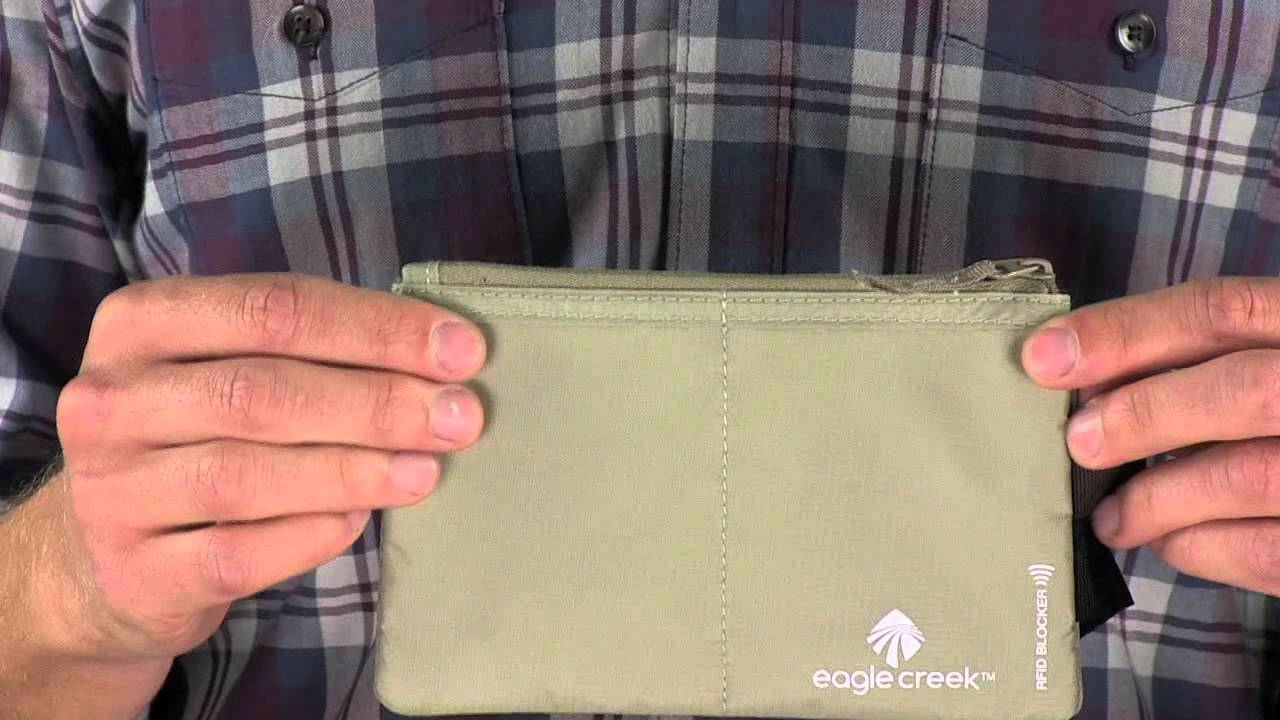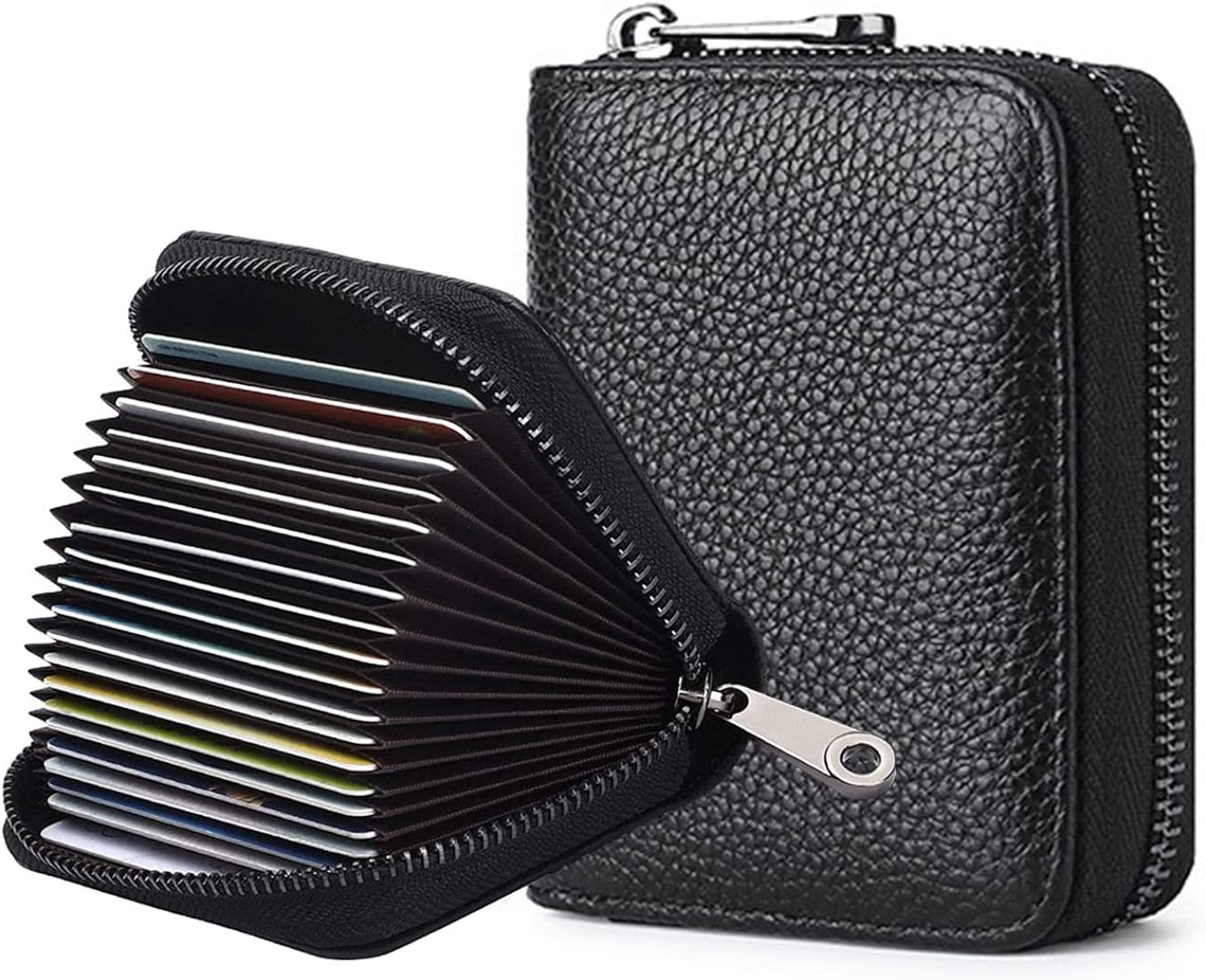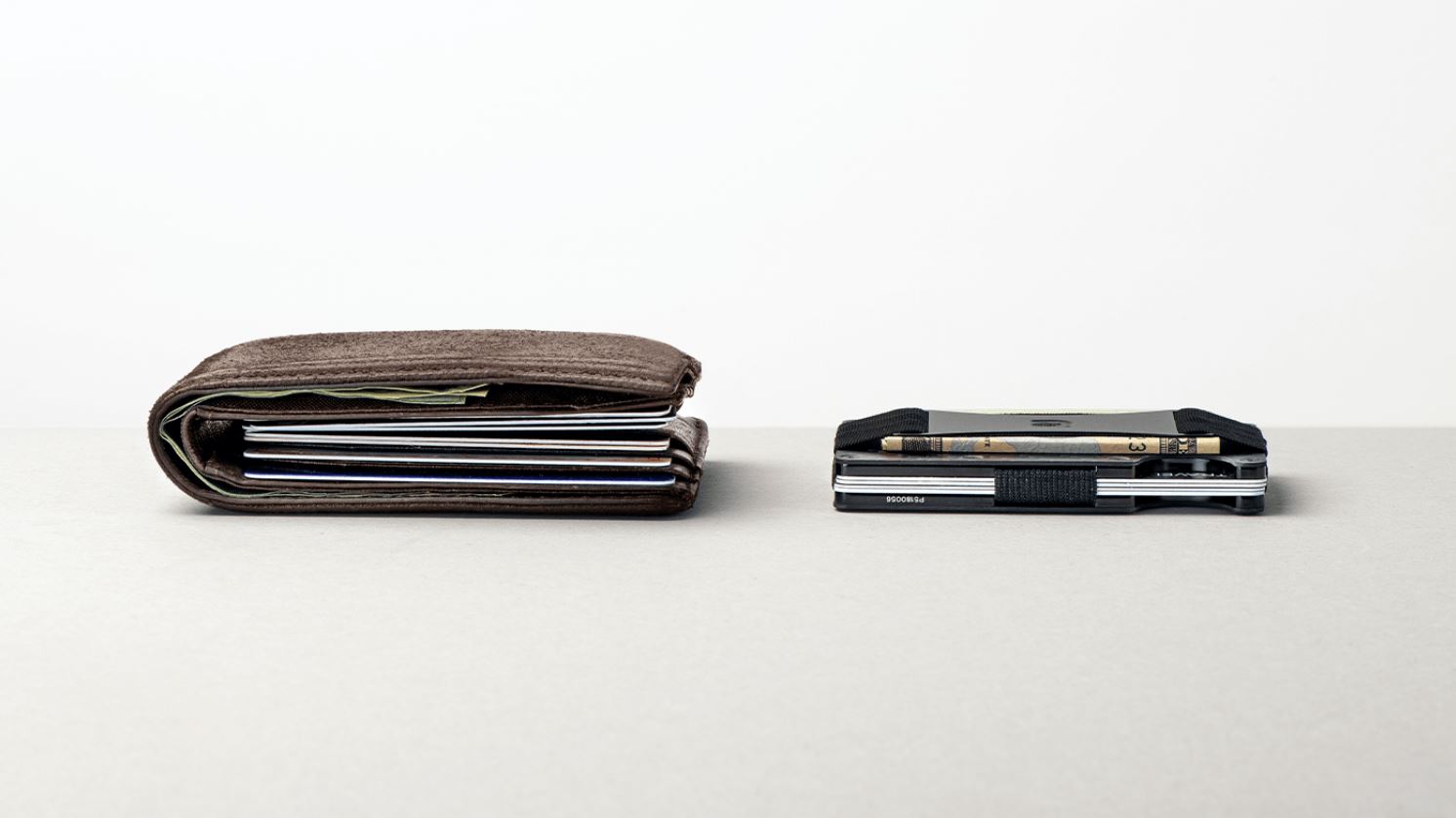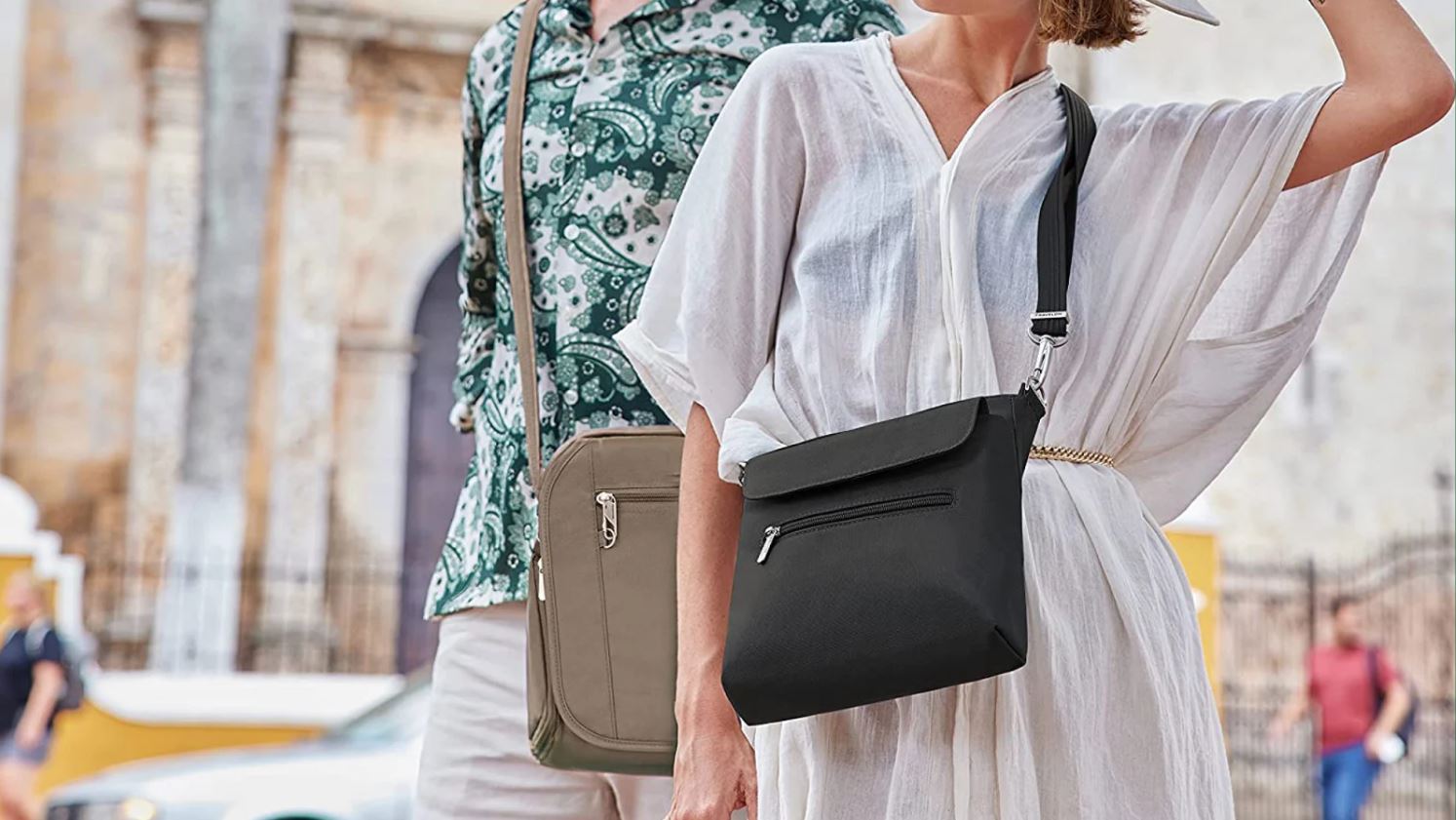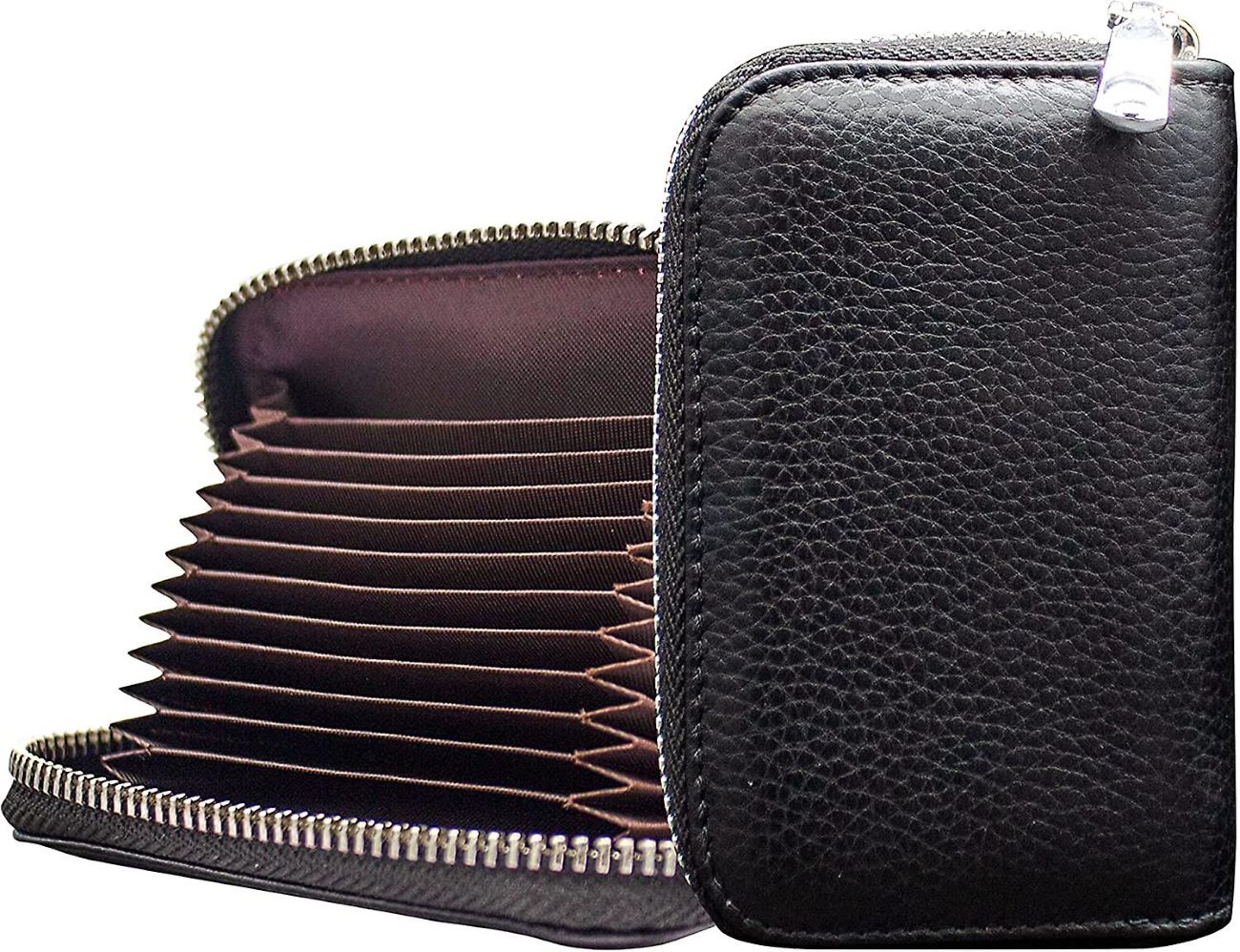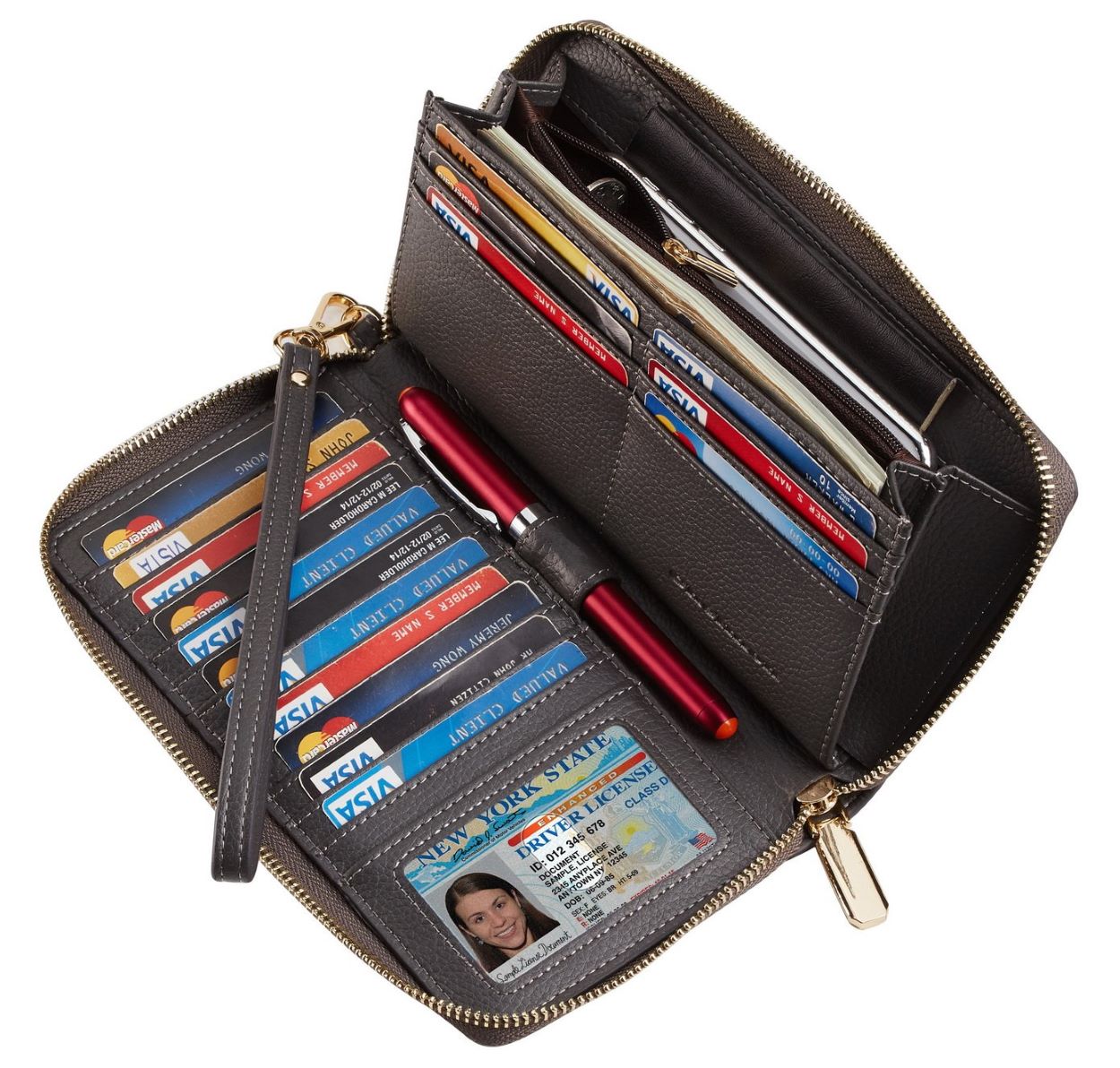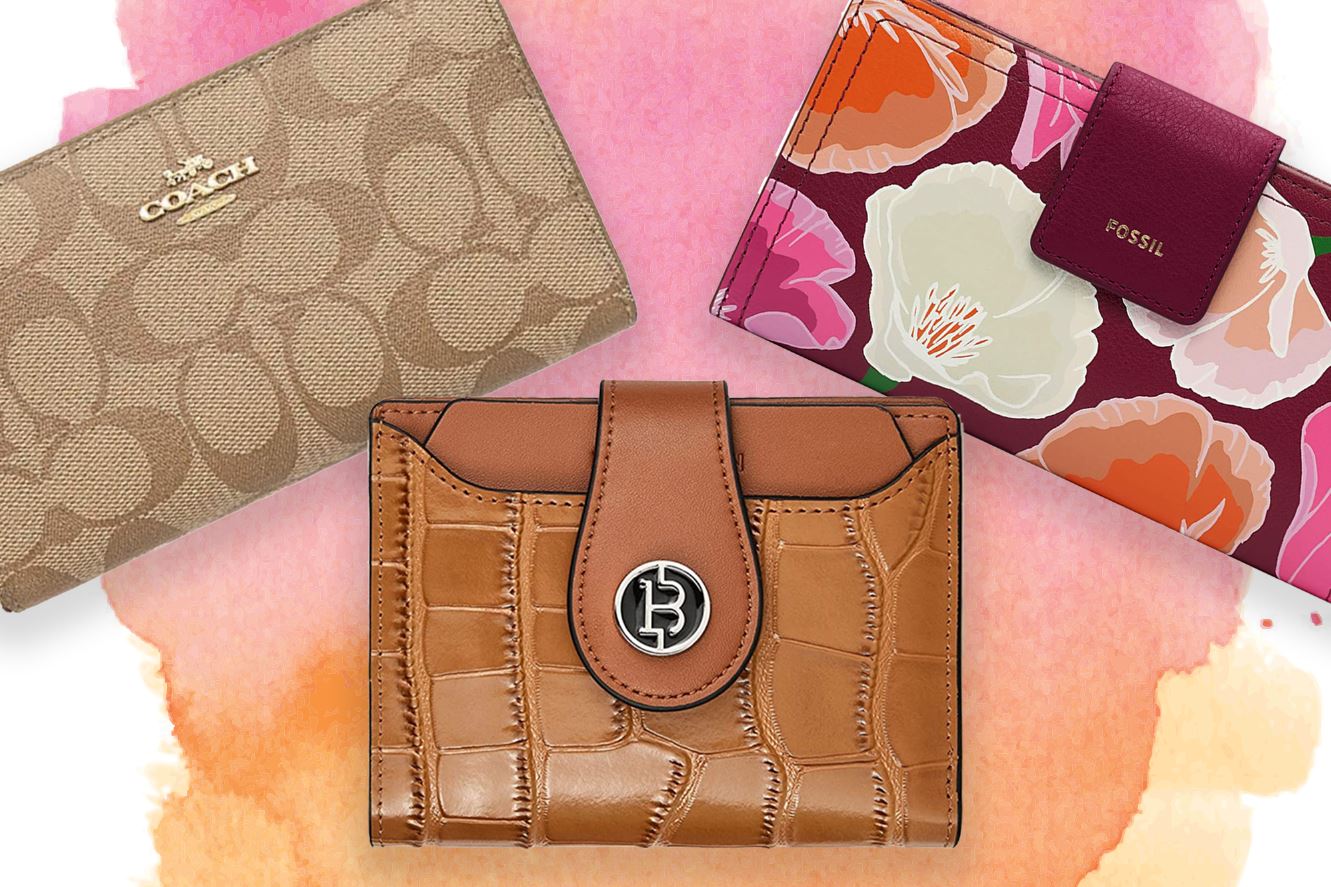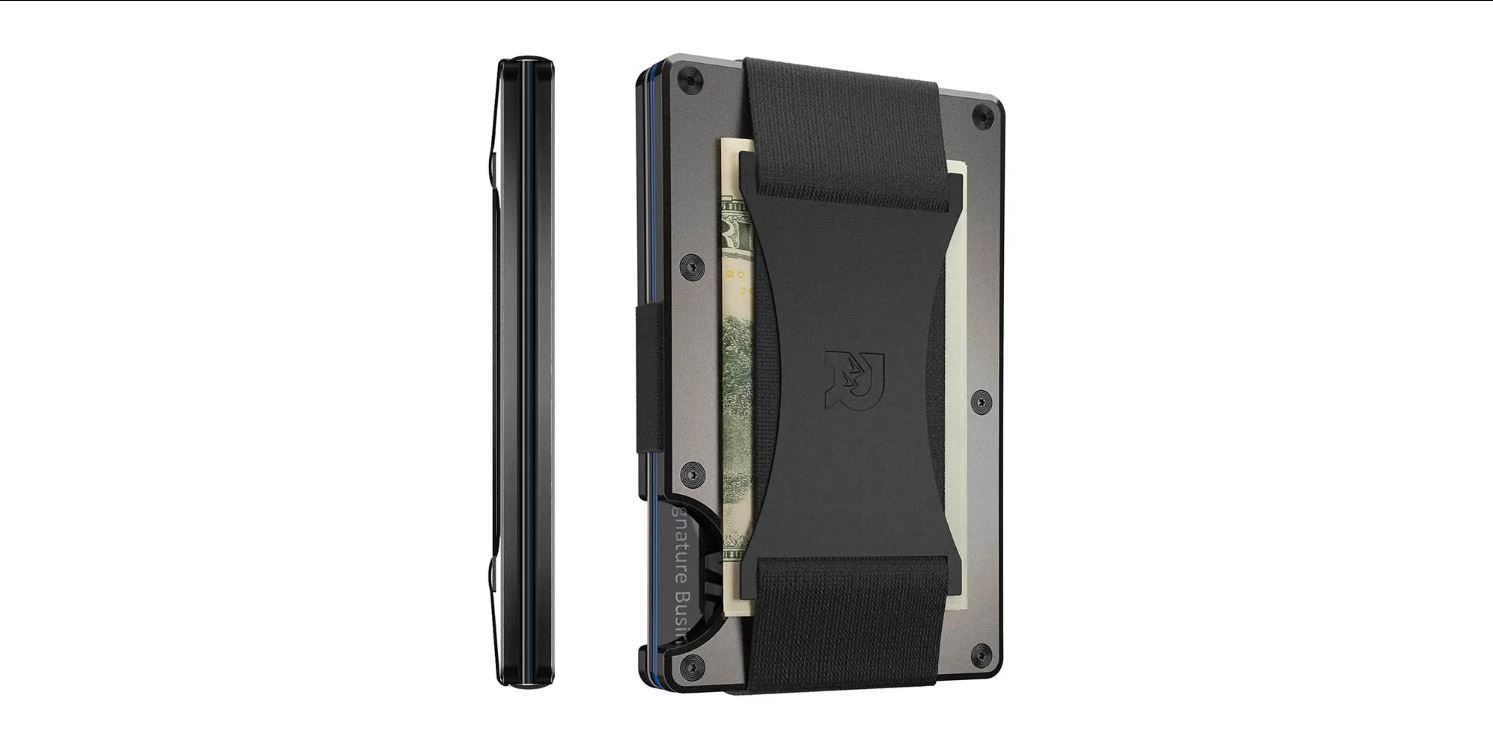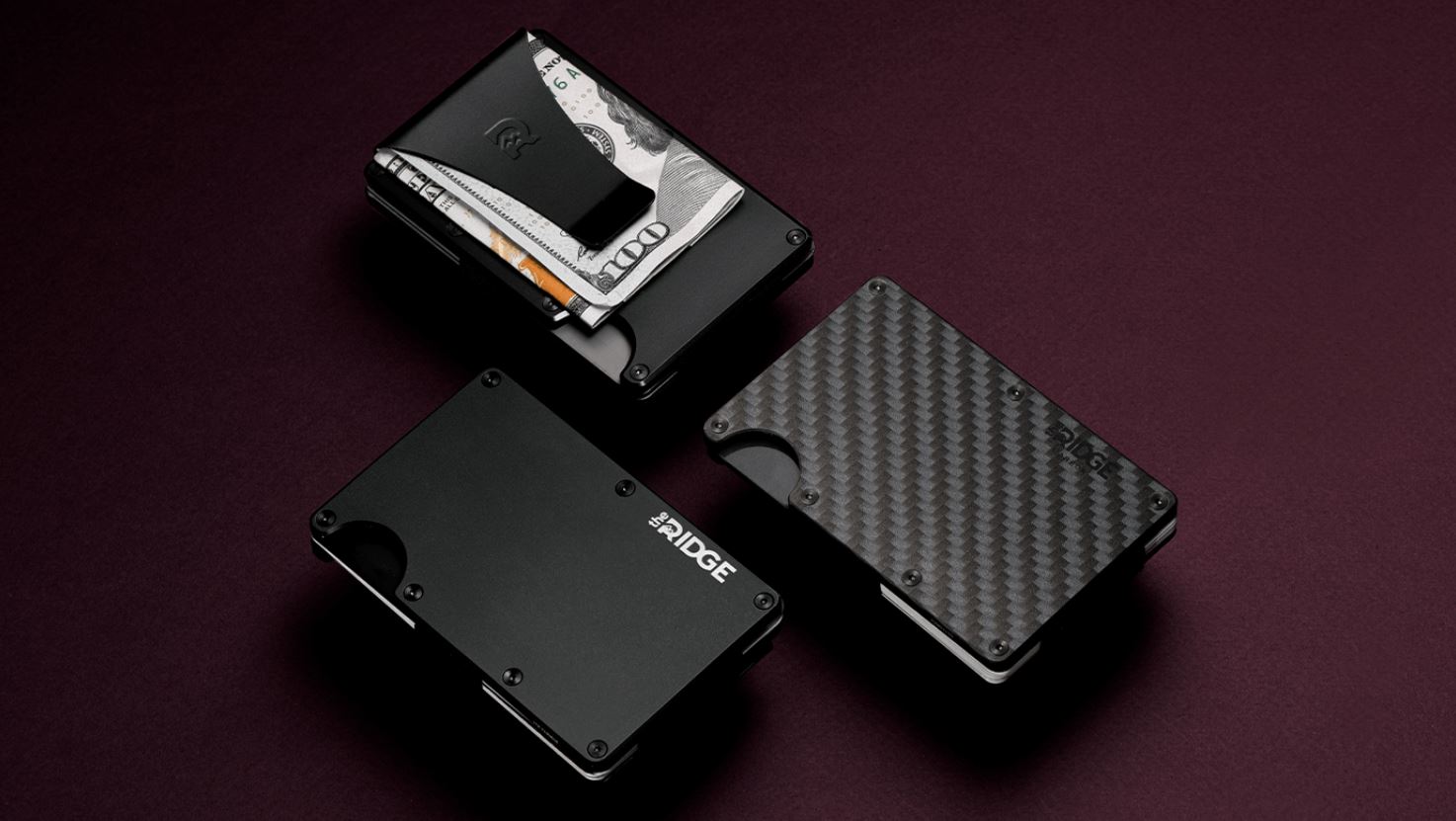Introduction
Welcome to the world of RFID technology, where convenience meets security in the form of an RFID pocket.
In today’s fast-paced world, our personal information is at risk more than ever before. With the rising popularity of contactless payment methods and the widespread use of smart cards, it has become crucial to protect our sensitive data from unauthorized access.
This is where RFID technology comes into play. RFID, which stands for Radio Frequency Identification, is a wireless technology that allows data to be transmitted between a tag or card and a reader through electromagnetic fields. While this technology offers numerous benefits, it also poses security risks, as hackers can easily intercept the data transmitted by RFID-enabled devices.
Fortunately, the invention of RFID pockets has provided a simple and effective solution to this problem. An RFID pocket is a specially designed wallet or pouch that features a protective lining, typically made of a material that blocks the electromagnetic signals emitted by RFID-enabled cards and prevents unauthorized scanning.
In this article, we will explore the concept of RFID pockets in more detail, including how they work, the benefits they offer, the different types available, and tips for using them effectively. By the end, you will have a better understanding of RFID pockets and be equipped to make an informed decision when choosing the right one for your needs.
What Is RFID?
RFID, which stands for Radio Frequency Identification, is a technology that uses radio waves to wirelessly transmit data between a tag or card and a reader. This technology has become increasingly prevalent in various industries due to its ability to streamline processes and increase efficiency.
At its core, RFID consists of three main components: the RFID tag or card, the RFID reader, and the backend system. The RFID tag or card contains a microchip with stored data and an antenna that allows it to communicate with the reader. The reader emits electromagnetic waves that power the tag or card and collect data from it. The backend system is responsible for processing and managing the collected data.
RFID technology offers numerous advantages over traditional barcode systems. Unlike barcodes, which require line-of-sight scanning, RFID tags can be read from a distance without the need for direct contact. This makes RFID ideal for applications such as inventory management, asset tracking, supply chain management, and access control.
There are two main types of RFID technology: passive and active. Passive RFID tags or cards do not have their own power source and rely on the electromagnetic waves emitted by the reader to power them. They are cost-effective and work well for short-range applications. On the other hand, active RFID tags or cards have their own power source, allowing them to transmit data over longer distances.
While RFID technology offers numerous benefits, it also presents security risks. The data stored on RFID tags or cards can be vulnerable to unauthorized access if proper security measures are not in place. This is where the need for RFID pockets arises.
With a basic understanding of RFID technology, we can now delve deeper into the concept of RFID pockets and how they help protect our sensitive information from unauthorized scanning.
What Is an RFID Pocket?
An RFID pocket, also known as an RFID-blocking pocket or an RFID shielded pocket, is a specialized compartment or lining in a wallet, purse, or pouch that is designed to protect RFID-enabled cards from unauthorized scanning.
RFID pockets are created using a special material that blocks the electromagnetic signals emitted by RFID-enabled devices. This material acts as a shield, preventing the transmission and reception of radio waves necessary for data exchange between the RFID card or tag and a potential hacker’s reader.
These pockets come in various forms and sizes. Some wallets or purses have a dedicated compartment with an RFID lining, while others have the entire interior made from RFID-blocking material. You can also find standalone RFID sleeves or pouches that can be used to store and protect individual cards.
The usage of RFID pockets has become increasingly important as the adoption of RFID technology continues to grow. With the increasing popularity of contactless payment methods, including credit cards, debit cards, and mobile payment technologies like Apple Pay and Google Pay, the risk of unauthorized scanning and data theft has become a real concern.
It is worth noting that not all cards in your wallet may be RFID-enabled. Most traditional magnetic stripe cards, like those used for identification or loyalty programs, do not have RFID technology embedded. However, credit cards, debit cards, access cards, and certain types of identification cards are often equipped with RFID technology.
By using an RFID pocket, you can selectively protect only the cards that have RFID capabilities while keeping other non-RFID cards easily accessible. This allows you to enjoy the convenience of contactless payment methods while maintaining peace of mind that your sensitive information is secure.
In the next section, we will explore how an RFID pocket works to provide the necessary protection for your RFID-enabled cards.
How Does an RFID Pocket Work?
An RFID pocket works by utilizing specially designed materials that block the transmission of radio waves emitted by RFID-enabled cards or tags. These materials, often made of metal-infused fabrics or polymers, create a barrier that prevents electromagnetic signals from reaching the RFID card or tag within the pocket.
When an RFID card or tag is placed in an RFID pocket, the protective lining acts as a shield, effectively blocking the electromagnetic waves that are necessary for communication between the RFID card and an unauthorized reader. This prevents potential hackers from accessing the sensitive data stored on the RFID card or tag.
The effectiveness of an RFID pocket depends on the materials used and the construction of the pocket itself. The lining must be made of a material that exhibits strong electromagnetic shielding properties. It should be able to attenuate radio waves and disrupt the signal transmission between the RFID card or tag and the reader.
RFID pockets work by creating a Faraday cage effect, named after the physicist Michael Faraday. A Faraday cage is an enclosure made of conductive materials that blocks external electric fields. In the case of RFID pockets, the conductive materials in the lining of the pocket create a barrier that prevents the radio waves from reaching and interacting with the RFID card or tag.
It is important to note that the effectiveness of an RFID pocket can vary depending on the strength and proximity of the RFID reader. While RFID pockets are designed to block typical scanning distances, it is still recommended to exercise caution in situations where the risk of unauthorized scanning is high, such as in crowded areas or public transportation.
Furthermore, some advanced RFID systems may use more powerful readers or employ techniques that can bypass standard RFID pocket protection. In such cases, additional security measures, such as encryption or using RFID-blocking sleeves, may be necessary.
Overall, an RFID pocket provides an easy and convenient way to protect your RFID-enabled cards from unauthorized scanning. It offers peace of mind by ensuring that your sensitive data remains secure, allowing you to confidently carry your contactless payment cards and other RFID-enabled items without worrying about potential threats.
Benefits of Using an RFID Pocket
Using an RFID pocket offers several significant benefits in today’s increasingly connected and digitally-driven world. Let’s explore some of the key advantages of using an RFID pocket:
1. Enhanced Security: The primary benefit of an RFID pocket is the enhanced security it provides. By blocking the electromagnetic waves necessary for unauthorized scanning, an RFID pocket helps to safeguard your sensitive information, including credit card details, personal identification, and other data stored on RFID-enabled cards.
2. Protection Against Identity Theft: With the rise in sophisticated identity theft techniques, protecting your personal information is crucial. An RFID pocket acts as a protective barrier against skimming devices that can capture your card details without physical contact. By using an RFID pocket, you significantly reduce the risk of identity theft and fraudulent activities.
3. Convenience and Peace of Mind: Carrying RFID-enabled cards and accessing contactless payment methods is undeniably convenient. An RFID pocket allows you to enjoy this convenience while maintaining peace of mind, knowing that your sensitive information is shielded from potential security breaches.
4. Versatility: RFID pockets are designed to accommodate various types of RFID-enabled cards, including credit cards, debit cards, access cards, and passports. With a single wallet or pouch featuring RFID protection, you can secure multiple cards, eliminating the need for individual sleeves or separate RFID-blocking products.
5. Durable and Stylish: RFID pockets are typically made from high-quality materials that are both durable and visually appealing. They are designed to withstand daily use, ensuring that your cards and personal information remain protected for an extended period. Moreover, RFID pockets come in various styles and designs to suit your preferences, allowing you to protect your cards in style.
6. Cost-Effective Solution: Investing in an RFID pocket is a cost-effective solution compared to the potential financial losses and headaches that can result from identity theft or fraudulent transactions. It provides long-term protection at a fraction of the cost that you might incur if your sensitive information were compromised.
7. Easy to Use: Using an RFID pocket is simple and hassle-free. You can conveniently slide your RFID-enabled cards into the designated compartment or pocket and access them as needed. There is no need to remove the cards from the pocket when making contactless payments or scanning access cards, making it a convenient solution for everyday use.
These benefits highlight the value of using an RFID pocket to protect your sensitive information. By utilizing this simple yet effective tool, you can safeguard your personal data, enjoy the ease of contactless transactions, and have peace of mind in today’s digital age.
Different Types of RFID Pockets
RFID pockets come in various types and designs to cater to different needs and preferences. Let’s explore some of the common types of RFID pockets available in the market:
1. Wallets with RFID Lining: These are traditional wallets or purses with a dedicated compartment or section that is lined with RFID-blocking material. The RFID lining creates a protective barrier for the RFID-enabled cards stored in that specific section, ensuring their security and preventing unauthorized scanning.
2. RFID-Blocking Sleeves or Card Holders: These are thin, flexible sleeves or card holders designed specifically to protect individual cards. They are usually made of RFID-blocking material and can be slipped over credit cards, ID cards, or other RFID-enabled cards. These sleeves or card holders provide a convenient and compact solution for RFID protection, allowing you to carry them in your wallet or purse.
3. RFID-Blocking Pouches: RFID-blocking pouches are standalone pockets or pouches designed to hold multiple RFID-enabled cards. They typically have RFID-blocking material incorporated into the entire interior, providing a comprehensive shield for your cards. These pouches are versatile and can be used independently or placed inside a larger bag or backpack.
4. Passport Holders with RFID Protection: Apart from cards, passports also contain RFID chips that store personal information. Passport holders with RFID protection are specifically designed to safeguard your passport from unauthorized scanning. They typically have an RFID-blocking lining to ensure that your passport data remains secure when traveling.
5. Phone Cases with RFID Pockets: Phone cases with built-in RFID pockets offer a convenient way to carry both your phone and RFID-enabled cards together. These cases often have a dedicated pocket or slot on the back or inside the case, allowing you to store and protect a few essential cards like credit cards and IDs. They provide easy access to your cards while keeping them secure and within reach.
6. Travel Wallets or Organizers: Designed for travelers, RFID-blocking travel wallets or organizers feature multiple compartments and pockets to hold various travel documents, including passports, boarding passes, credit cards, and more. These wallets often have RFID-blocking material integrated into the passport and card slots, ensuring the safety of your personal information during your journeys.
These are just a few examples of the different types of RFID pockets available. Each type offers unique features and benefits, allowing you to choose the one that best suits your needs and preferences. Whether you prefer traditional wallets, compact sleeves, or multifunctional organizers, there is an RFID pocket option available to help protect your sensitive information.
Choosing the Right RFID Pocket for You
When it comes to choosing the right RFID pocket, there are a few factors to consider to ensure that it meets your specific needs and preferences. Here are some key considerations to help you make an informed decision:
1. RFID Protection Level: Different RFID pockets offer varying levels of protection. Look for pockets that clearly state they use RFID-blocking materials to shield your cards. Consider the level of protection you require based on your usage and the types of RFID-enabled cards you carry.
2. Size and Capacity: Determine how many RFID-enabled cards you need to carry and consider the overall size and capacity of the RFID pocket. Larger wallets or pouches can hold more cards, while slim sleeves or compact card holders may be suitable for carrying a few essential cards. Ensure that the RFID pocket has adequate space to accommodate your needs without being too bulky or cumbersome.
3. Convenience and Accessibility: Consider the convenience and ease of use of the RFID pocket. Wallets with dedicated RFID compartments provide seamless organization, while sleeves or pouches offer quick access and versatility. Choose a design that allows for easy insertion and removal of your cards, making contactless transactions hassle-free.
4. Durability and Material: Look for RFID pockets made of durable materials that can withstand daily use. Opt for high-quality fabrics or polymers that are resistant to wear and tear. This ensures that your RFID pocket will last longer and continue to provide reliable protection for your cards.
5. Style and Design: RFID pockets come in various styles and designs. Choose one that aligns with your personal taste and fashion preferences. Whether you prefer a sleek and minimalist design or a bold and colorful option, there are RFID pockets available to match your style.
6. Compatibility: Consider the types of RFID-enabled cards you own and ensure that the RFID pocket is designed to fit and protect them effectively. Some pockets may cater specifically to credit cards, while others may accommodate passports, IDs, or access cards. Check the dimensions and specifications of the pocket to ensure compatibility.
7. Reviews and Recommendations: Before making a purchase, read reviews and seek recommendations from others who have used the RFID pocket you are considering. This can provide valuable insights into the product’s performance, durability, and overall customer satisfaction.
By considering these factors, you can choose an RFID pocket that aligns with your needs, preferences, and lifestyle. Remember to prioritize the security and protection offered by the RFID pocket, while also ensuring that it suits your style and offers convenience in daily use.
Tips for Using an RFID Pocket Effectively
Using an RFID pocket correctly can ensure maximum protection for your RFID-enabled cards. Here are some tips to help you use an RFID pocket effectively:
1. Know Your RFID-Enabled Cards: Understand which of your cards are RFID-enabled. This includes credit cards, debit cards, access cards, and identification cards. Not all cards in your wallet may have RFID technology, so it’s important to identify the ones that do to determine which ones require RFID protection.
2. Insert Cards Properly: When placing your cards in an RFID pocket, ensure they are fully inserted and not protruding. This ensures that the RFID-blocking material effectively shields the entire card. Improper card placement may reduce the effectiveness of the RFID pocket’s protection.
3. Avoid Overcrowding: It’s important not to overcrowd your RFID pocket. Too many cards can cause pressure and make it difficult to insert or remove the cards. Additionally, stacking multiple RFID-enabled cards too closely together may hinder the effectiveness of the RFID-blocking material. Consider carrying only the necessary RFID cards to maintain optimum protection.
4. Keep the RFID Pocket Closed: When not in use, ensure that your RFID pocket is closed to provide continuous protection for your cards. Leaving the pocket open or unsecured may expose your cards to potential risks, such as accidental scanning or damage.
5. Be Mindful of Placement: Place your RFID pocket in a secure and easily accessible location, such as an inside pocket of your bag or the wallet compartment closest to your body. This minimizes the risk of accidental card removal or exposure to potential RFID scanners in crowded areas.
6. Regularly Check Your Cards: Periodically check your RFID-enabled cards for any signs of wear or damage. If you notice any cracks, warps, or malfunctions, consider replacing the card to ensure it continues to function properly with the RFID pocket’s protection.
7. Stay Informed: Stay updated on the latest trends and advancements in RFID technology and RFID-blocking materials. Keep an eye on any developments that may affect the effectiveness of your RFID pocket, and consider upgrading your pocket if necessary.
8. Traveling Precautions: When traveling, be aware of the RFID scanners used in airports, hotels, or other public areas. While your RFID pocket provides protection, you may want to take extra precautions, such as keeping your RFID pocket in a secure compartment or using additional protective measures like RFID-blocking sleeves for passports and travel documents.
By following these tips, you can ensure that your RFID pocket provides effective protection for your RFID-enabled cards, giving you peace of mind and confidence in an increasingly digital world.
Frequently Asked Questions
Here are some commonly asked questions about RFID pockets:
Q: Do all my cards need RFID protection?
A: Not all cards in your wallet may require RFID protection. Only RFID-enabled cards, such as credit cards, debit cards, access cards, and certain types of identification cards, need RFID protection. Most traditional magnetic stripe cards do not have RFID technology.
Q: Can an RFID pocket completely protect my cards from all scans?
A: While RFID pockets provide a high level of protection, it is important to note that no security measure is 100% foolproof. RFID pockets create a barrier that significantly reduces the risk of unauthorized scanning, but there is a small chance that with advanced technology, some scanners may still be able to access your cards. However, the likelihood of this is very low.
Q: Can I still use my contactless cards while they are in an RFID pocket?
A: Yes, you can still use your contactless cards while they are inside an RFID pocket. The RFID-blocking material does not interfere with the card’s ability to transmit signals for contactless transactions. Simply tap or wave your card as you normally would at a compatible payment terminal or access reader.
Q: Can I use an RFID pocket with my smartphone?
A: While RFID pockets are primarily designed to protect RFID-enabled cards, there are phone cases available with built-in RFID pockets. These cases allow you to carry your phone and a few essential RFID-enabled cards together in one convenient package.
Q: Can I wash an RFID pocket?
A: The care and maintenance instructions for an RFID pocket depend on the specific product and materials used. Most RFID pockets can be wiped clean with a damp cloth. However, it is important to refer to the manufacturer’s guidelines for proper cleaning and care instructions to ensure the longevity and effectiveness of the RFID pocket.
Q: Do I need to replace my RFID pocket over time?
A: RFID pockets are designed to be durable and provide long-term protection. However, over time, the effectiveness of the RFID-blocking material may diminish due to wear and tear. It is a good practice to periodically check the condition of your RFID pocket and replace it if you notice any signs of damage or if it no longer provides sufficient protection.
Q: Are RFID pockets legal to use?
A: Yes, RFID pockets are legal to use. They are designed to protect your sensitive information from unauthorized scanning and do not interfere with any legal security protocols implemented by card issuers or authorities.
These FAQs address some of the common concerns and queries related to RFID pockets. If you have any further questions or require specific information, it is recommended to consult the manufacturer or reach out to a reputable seller of RFID pockets.
Conclusion
RFID pockets are an essential accessory in today’s world to protect your sensitive information from the threat of unauthorized scanning and identity theft. With the increasing use of RFID-enabled cards, such as credit cards, debit cards, and access cards, the need for effective RFID protection has become paramount.
In this article, we explored the concept of RFID pockets and their significance in securing your RFID-enabled cards. We discussed how RFID pockets work by creating a barrier that blocks electromagnetic signals, preventing potential hackers from accessing your personal data.
We also highlighted the benefits of using an RFID pocket, including enhanced security, protection against identity theft, convenience, versatility, and cost-effectiveness. The different types of RFID pockets available, such as wallets with RFID lining, RFID-blocking sleeves, pouches, phone cases, and travel wallets, cater to various needs and preferences.
To use an RFID pocket effectively, we provided helpful tips to ensure proper card placement, avoid overcrowding, maintain the pocket in a closed state, and be mindful of placement and travel precautions. These tips will help you maximize the protection offered by your RFID pocket.
We addressed frequently asked questions to clarify common doubts and concerns related to RFID pockets, providing a comprehensive understanding of their functionality and usage.
In conclusion, integrating an RFID pocket into your daily routine is a simple yet effective measure to safeguard your personal information. By choosing the right RFID pocket, using it correctly, and staying informed about the latest technology trends, you can enjoy the convenience of contactless transactions while maintaining peace of mind regarding the security of your sensitive data.







